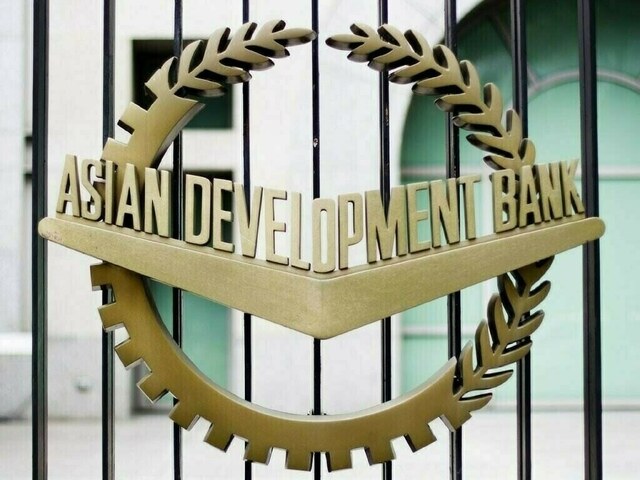By Tahir Amin
Copyright brecorder

ISLAMABAD: The Asian Development Bank (ADB) has sounded the alarm over Pakistan’s economy, warning of mounting downside risks to growth and stability, with inflation projected to climb to 6 percent in fiscal year 2026 on the back of flood-hit food supplies and higher gas tariffs.
The Bank in its latest “Asian Development Outlook (ADO) September 2025,” stated that the fiscal year 2026 growth forecast unchanged at 3 percent, reflecting the expectation that economic performance will be buoyed by continued reform to address structural weaknesses.
The report noted that Pakistan’s economic outlook faces several downside risks that could adversely affect growth and macroeconomic stability. Key domestic risks stem from policy slippage and climate change. Failure to meet revenue and fiscal consolidation targets, or delays in implementing critical reforms, remain top concerns.
Policy slippage could weaken business confidence, raise borrowing costs, and increase external financing risks. Pakistan’s vulnerability to extreme weather and natural hazards like floods threatens agriculture and infrastructure, which could reverse last year’s decline in food price inflation, disrupt economic activity, and strain household incomes.
Global geopolitical risks, including uncertainty about international economic policies, could negatively affect inflation, external stability, and business confidence. On the upside, faster reform implementation and a more favourable external environment could boost investor confidence and push growth above current expectation, thereby strengthening Pakistan’s overall economic resilience.
In Pakistan, growth accelerated in fiscal year 2025 (ended 30 June 2025), while the forecast for 2026 is unchanged. The economy grew by 2.7 percent in fiscal year 2025 as investment increased, attracted by stable macroeconomic conditions and ongoing policy reform. Growth came primarily from industry and services while bad weather affected agriculture.
Economic reform has progressed considerably under the IMF Extended Fund Facility arrangement that began in October 2024. Policy consistency and climate resilience remain vital to maintaining the growth momentum. Downside risks to the outlook remain high, it added.
“Pakistan’s growth prospects remain positive,” said ADB Country Director for Pakistan Emma Fan. “However, the country continues to face structural challenges, compounded by recurring disasters such as the recent floods. In this context, consistent reforms and policy implementation are essential for reinforcing policy credibility, sustaining economic momentum, and enhancing the country’s resilience.”
In fiscal year 2026, economic activity is expected to strengthen, supported by improved external buffers and renewed business confidence following the US-Pakistan trade agreement.
However, the damage caused to infrastructure and farmland by the recent floods may weigh on growth. Recovery and rehabilitation efforts, bolstered by fiscal incentives for the construction sector announced in the fiscal year 2026 budget, are expected to partially offset the adverse impact.
Average inflation is projected to increase to 6 percent in fiscal year 2026, reflecting the impact of flood-related supply chain disruptions on food prices and the increase in gas tariffs. In response, the central bank is expected to adopt a cautious approach to easing monetary policy to stabilise inflation within its medium-term target range of 5 percent -7 percent.
Interest payments alone are 40 percent of government revenues in Pakistan, said the Bank, adding that Pakistan’s debt is expected to stabilise at around 75 percent of GDP.
Although inflation rose from May 2025, reaching 4.1 percent in July 2025, it remained below the central bank’s target range of 5 percent–7 percent. Nevertheless, the central bank decided to pause further rate cuts as it assessed increased risks to the inflation outlook from upward adjustments in energy tariffs and the continuing impact of earlier rate cuts.
Growth is expected to strengthen, assuming progress continues under the economic adjustment program. With greater macroeconomic stability, the program seeks to accelerate structural reform, boost Pakistan’s competitiveness, and guide the economy toward sustainable growth.
Pakistan continues to face significant structural challenges and vulnerabilities, intensified by recurring climate-induced natural hazards, such as floods this monsoon season. Given these challenges, consistent policy implementation is crucial to enhance resilience and policy credibility.
Top priorities are to lower the energy sector’s high costs, and tax reform to improve efficiency and fairness; others are to lower trade and investment barriers, advance reform in state-owned enterprises, strengthen the governance framework, and foster sustainability.
The growth forecast for fiscal year 2026 remains unchanged. While a boost to economic activity is expected from the rapid easing of risks tied to debt and the balance of payments, as seen in the upgrade of Pakistan’s sovereign credit ratings by global credit rating agencies, as well as renewed business confidence spurred by a recent US-Pakistan trade agreement, the damage caused to infrastructure and farmland during the recent floods may decelerate growth.
Recovery and rehabilitation efforts following the floods, supported by fiscal incentives for construction announced in the fiscal year 2026 budget, may partly offset their adverse impact on growth.
Investment is anticipated to increase with greater business confidence, declining interest rates, and adherence to fiscal consolidation, which will lower government borrowing needs and allow more lending for private investment.
Copyright Business Recorder, 2025



